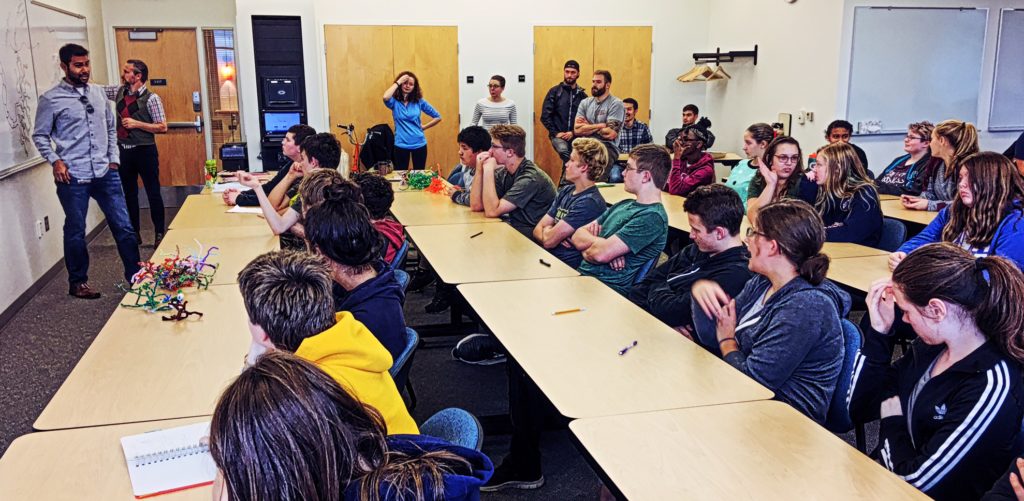Another eager crowd of Noggin volunteers arrived at iTech Prep this afternoon, to talk synapses, receptors and drugs with 160 sharp high school students we met last week…
Today we also welcomed Ram Kandasamy, a graduate student in Mike Morgan’s lab at WSU Vancouver, and post doc Dr. John Harkness from Barb Sorg’s lab, to talk about their research on cannabinoids and cocaine…
Our many undergraduate volunteers included Kim Engeln, Joey Seuferling, Mary Nelson, Cole Dawson, Sterling Drakeford Gray, Maria Honsowetz, Nick Dunn, Sara Batarseh, Christina Williams, Tony Merino and Zander Eisenhower from WSU Vancouver, and Allie Clark from Psychology at Portland State…
We had so many additional volunteers, we spent some time introducing ourselves, telling personal stories of how we got involved in neuroscience, or psychology. We noted the many paths available – including lab work, teaching, academic research, industry research, public policy, journalism, and a host of fields once considered “alternative” in science, but which are now pretty much mainstream opportunities…
Kim emphasized the importance of good, clear communication, with attention to detail and accuracy, in science writing and teaching – skills our volunteers had ample chance to display and practice over two hours of presentation…
We are always struck by how enthusiastic everyone gets in these multi-generational, multi-institutional, multi-disciplinary classrooms, where graduates learn to accessibly explain their research discoveries, undergraduates express their own understanding of the brain and behavior, and K-12 students ask deep questions about who they are, what they’re made of, and how learning more about neuroscience is possible, right here in town…
Ram Kandasamy talked at length about cannabinoid research, and how these psychoactive chemicals found in marijuana offer promise to millions of people suffering from chronic pain…
LEARN MORE: Chronic pain and Mary Jane (Ram Kandasamy, WSU Vancouver)
While John Harkness presented his research on cocaine addiction, and the role of synaptic scaffolding known as peri-neuronal nets in regulating plasticity in neural networks that underlie drug-related memories…
LEARN MORE: Your brain is plastic @ Velo Cult (John Harkness, Ph.D.)
Jeff Leake then introduced the extraordinary brain cells that connect – nets and all – to route information and generate our astonishing perceptual and cognitive experiences. Students at iTech, some of whom are currently engineering their own large scale brain…
@iTechPrep Brain Building Bonding takes teamwork to get things done. #STEM #learningisfun #ilovethis pic.twitter.com/lYP2sCkeSo
— Ian (@ihurst8) October 28, 2016
…really got into building their own neurons out of pipe cleaners!
Many thanks to our volunteers, and to iTech Prep for welcoming us into the classroom!

























